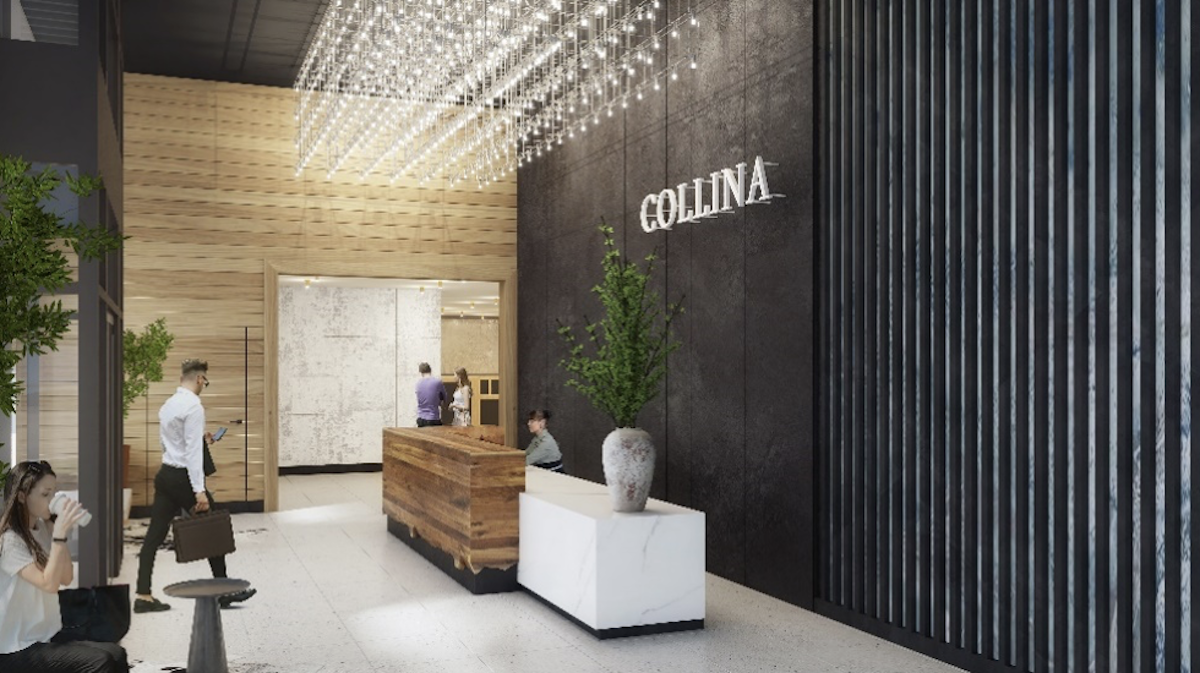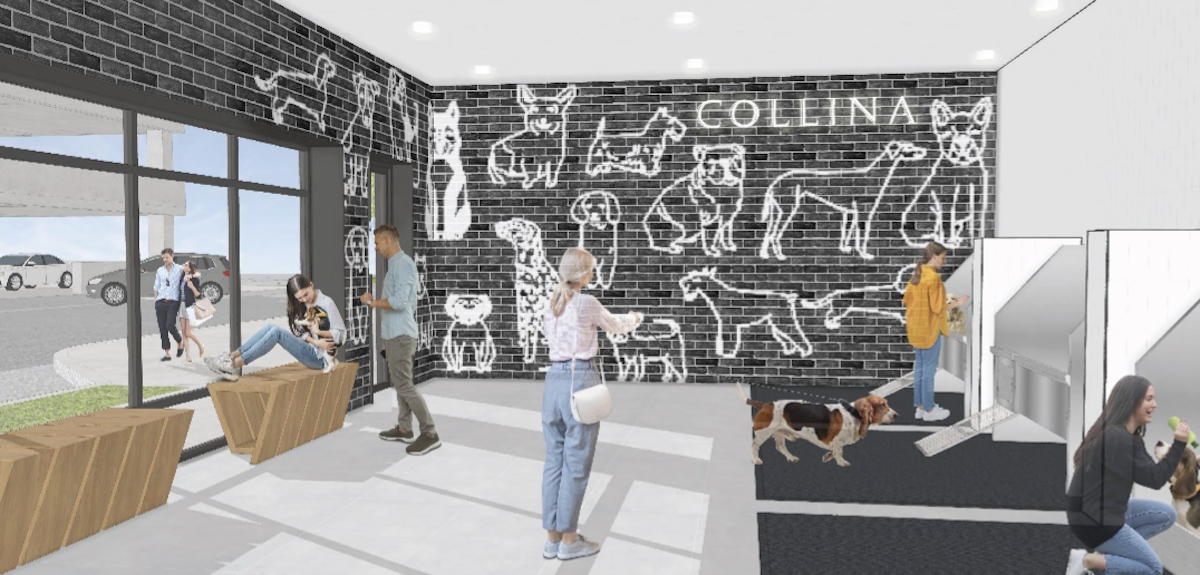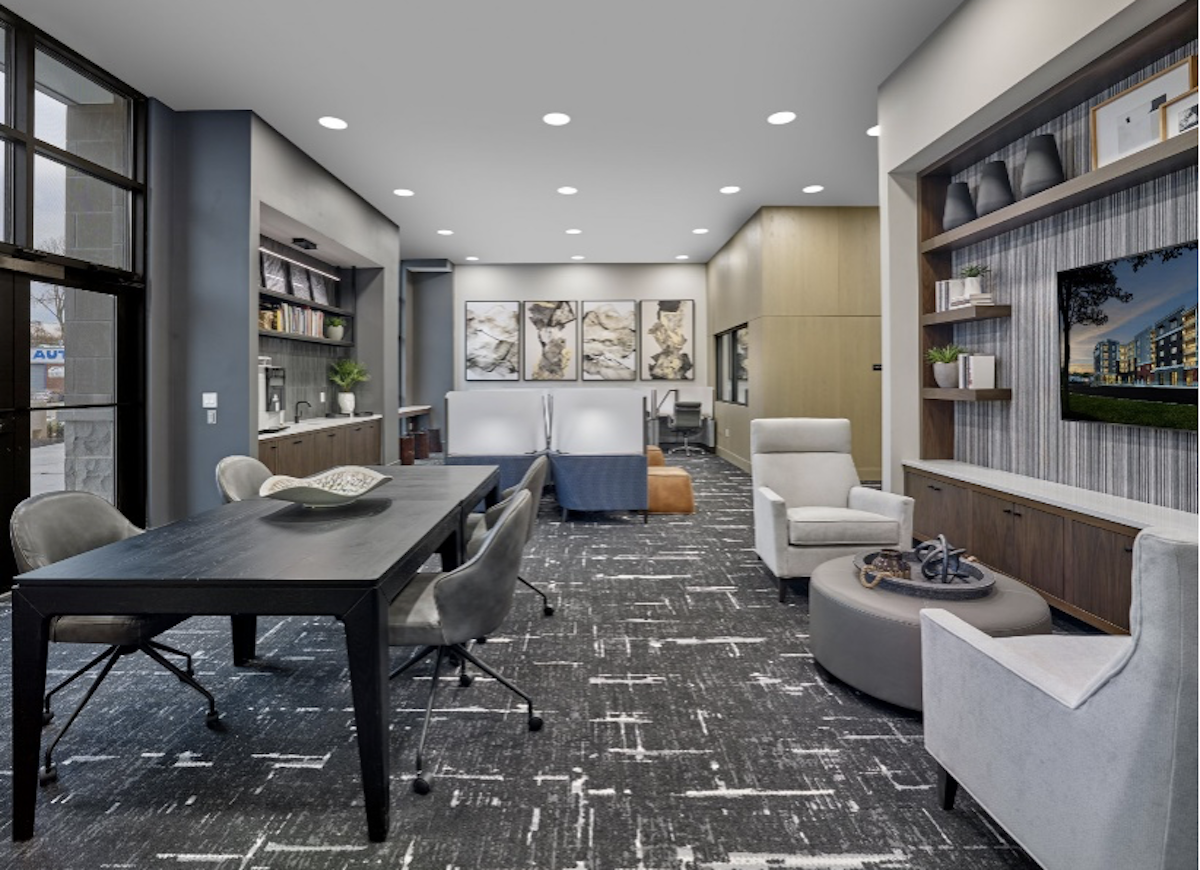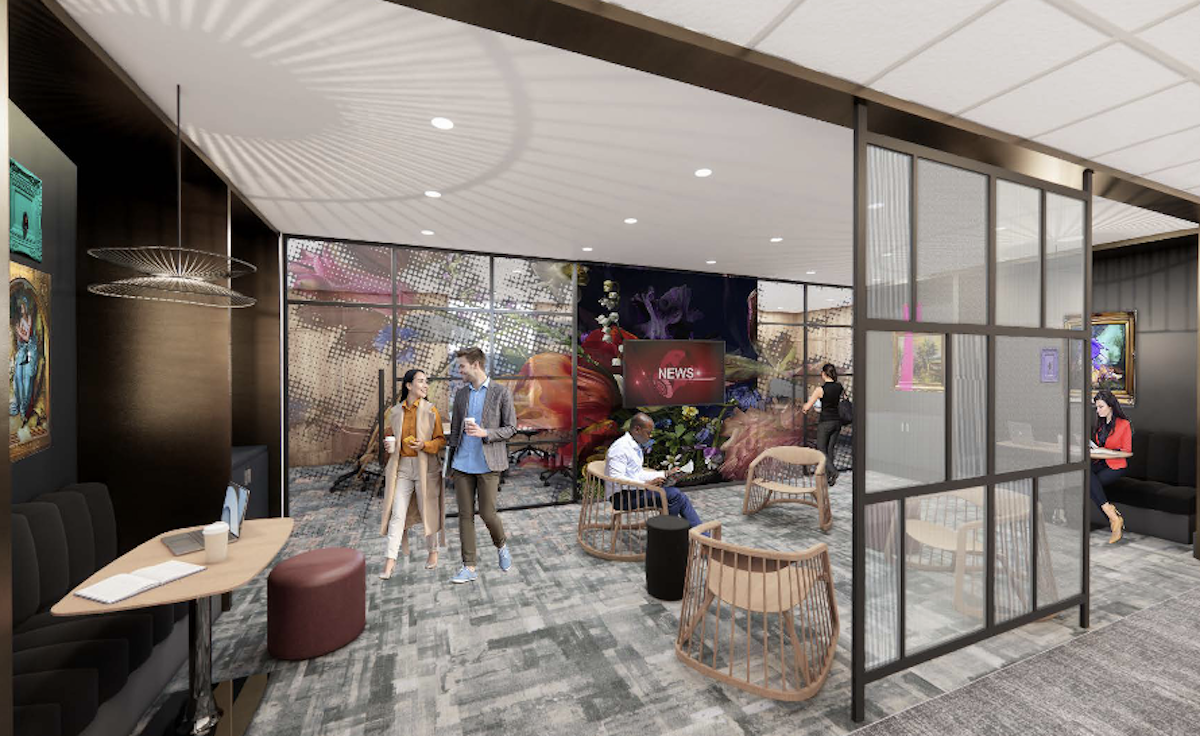The multifamily landscape is ever-evolving as changing demographics, health concerns, and work patterns shape what tenants are looking for in their next home. At Ci Design, our Residential Practice experts have identified five important trends that are reshaping the design of multifamily projects.
1. Encourage Healthy Habits
Apartment communities encompassing whole health, including physical, mental, social, and environmental wellness, can offer lasting benefits for residents. According to the World Health Organization, the built environment can influence up to 85% of our health outcomes.
Spacious clubhouses can surely draw in tenants, but more recently, walkability and outdoor connections outweigh extravagant perks. Curated outdoor spaces like a dog park or a central green plaza encourage social connections and a healthy lifestyle. Research has suggested connections to nature by bringing natural elements indoors can also offer restorative benefits.
Biophilic design can help activate the parts of our brain that reduce stress, help recharge our minds and bodies, and inspire us. Natural finishes that employ wood, water, stone, and living plants can offer a sense of calm and serenity. Views of the surrounding environment through spacious windows or balconies can also support exploration and stronger connections to the outdoors.
Pedestrian-friendly features such as walking trails or integrated parks can contribute to the overall appeal and sustainability of the development. Introducing state-of-the-art equipment in fitness centers can leverage an apartment building’s amenities, but integrating outdoor spaces that can accommodate group fitness like yoga can further attract potential tenants.
Aura Chapel Hill will include several features for the surrounding Chapel Hill, N.C., community to enjoy, such as public parks, on-site retail, and walking and biking trails. The client has also engaged an artist to provide two large sculptures that will provide focal points for these outdoor areas. While these outdoor spaces are meant to serve as a tenant amenity, they also bring a visual attractiveness to the community.
2. Emulate Resort-Style Living
Like grand resorts with all-inclusive offerings, multifamily developments are adopting a similar approach to create awe for guests within shared amenity spaces. Collina’s elegant lobby entrance establishes a feeling of luxury and higher-end commodity for residents within a busy commercial corridor in Baltimore County, Md.

A network of resort-style lavish green open spaces, such as public plazas and outdoor gardens, will create an active site, along with such amenities as a pool, club room, entertainment kitchen, game and media lounge, state-of-the-art fitness center, and co-working lounge.
This new wave of amenities also applies not only to occupiers’ pets. Pet-washing stations and spas have become a must-have in pet-friendly multifamily developments. Singles and renters make up the fastest-growing group of new dog owners, according to the American Veterinary Medical Association. This cost-friendly alternative offers pet owners an added convenience for their pups' grooming needs with self-service stations that are more manageable than maneuvering around a bathtub.

Evolve Companies’ multifamily project in Palm Coast, Fla., will feature a freestanding clubhouse that will house the complex’s leasing office and mail facility along with the project’s main amenities: a great room with lounge, kitchenette and dining area, business center, game room, and fitness center with dedicated yoga studio.
As part of the exterior amenities, the project will also offer a resort-style pool and outdoor gathering areas to take advantage of the Floridian weather and surrounding views.
3. Provide Co-Working Spaces
As hybrid work continues to be a way of life for many in the workforce, residents are seeking flexible living environments that cater to their lifestyles. Co-working spaces and common spaces with adaptable furnishings encourage social interaction throughout one’s remote workday, and designing separate work environments from living spaces promotes a healthier work-life balance. Multifamily developments providing work-friendly spaces, flexible floor plans and amenities such as quiet and private meeting rooms are becoming more attractive as the typical 9 to 5 office workday is becoming less common.

4. Create Instagrammable Moments
The next generation of renters want spaces that create a “Wow!” factor when they walk in. An apartment lobby or amenity should present the perfect opportunity for a photograph or Instagrammable moment, outdoors or in. Modernized design elements and eye-catching art pieces within co-working or gathering spaces provide renters with a fresh backdrop to share with their own community. Proximity to outdoor spaces like courtyards or a resort-style pool further encourages a scenic lifestyle that young tenants are craving.

Amenities in the Ruxton Tower Apartments in Towson, Md., feature colorful artwork and bold graphics throughout the wallcoverings to not only bring a contemporary note to the design but also provide a fresh, dynamic quality to each space.
5. Elevate Lifestyles, Well-Being, Social Connections
In the fast-paced realm of multifamily developments, staying ahead means crafting unforgettable experiences that resonate with residents and visitors alike. It's not just about meeting basic needs anymore; it's about curating spaces that elevate lifestyles, boost well-being, and foster vibrant social connections.
Our approach infuses every aspect of design with innovation and intentionality. From cutting-edge amenities that promote health and productivity to tailored communal spaces that encourage community building, we're committed to shaping sustainable environments that leave a lasting impact on every individual (and pet) who calls them home.
About the Authors
Tim Schelfe, FASID, CID, is a Ci Principal with more than 35 years' experience as Director of Interior Design & Procurement. Schelfe has received more than 40 design awards for his portfolio of multifamily, hospitality, commercial, senior living, and custom residential interior design projects. He has served as Chair of the National Board of Directors for ASID and as a Past President of the ASID Carolinas Chapter.
Wendy Oberer, Assoc. AIA, Associate Principal, has over two decades of design and project management experience for multifamily, senior living, and mixed-use developments. She has extensive experience in all phases of a project, including project management, programming, master planning, schematic design, construction documents, and construction administration.
About Ci Design
Ci Design is an award-winning design firm with practices in science and technology, commercial and mixed-use, residential, mission critical, workplace, and industrial manufacturing and offices in Baltimore, Boston, Dallas, Arlington, Va., Greenville, S.C., and Raleigh, N.C. Ci’s 100+ team members provide architecture, planning, landscape design, experiential graphics and branding, lab and manufacturing planning, interior design, procurement, strategy, and change management services.
Related Stories
MFPRO+ News | Sep 23, 2024
Minnesota bans cannabis smoking and vaping in multifamily housing units
Minnesota recently enacted a first-in-the-nation statewide ban on smoking and vaping cannabis in multifamily properties including in individual living units. The law has an exemption for those using marijuana for medical purposes.
Adaptive Reuse | Sep 12, 2024
White paper on office-to-residential conversions released by IAPMO
IAPMO has published a new white paper titled “Adaptive Reuse: Converting Offices to Multi-Residential Family,” a comprehensive analysis of addressing housing shortages through the conversion of office spaces into residential units.
MFPRO+ Research | Sep 11, 2024
Multifamily rents fall for first time in 6 months
Ending its six-month streak of growth, the average advertised multifamily rent fell by $1 in August 2024 to $1,741.
Legislation | Sep 9, 2024
Efforts to encourage more housing projects on California coast stall
A movement to encourage more housing projects along the California coast has stalled out in the California legislature. Earlier this year, lawmakers, with the backing of some housing activists, introduced a series of bills aimed at making it easier to build apartments and accessory dwelling units along California’s highly regulated coast.
MFPRO+ New Projects | Sep 5, 2024
Chicago's Coppia luxury multifamily high-rise features geometric figures on the façade
Coppia, a new high-rise luxury multifamily property in Chicago, features a distinctive façade with geometric features and resort-style amenities. The 19-story, 315,000-sf building has more than 24,000 sf of amenity space designed to extend resident’s living spaces. These areas offer places to work, socialize, exercise, and unwind.
Resiliency | Sep 3, 2024
Phius introduces retrofit standard for more resilient buildings
Phius recently released, REVIVE 2024, a retrofit standard for more resilient buildings. The standard focuses on resilience against grid outages by ensuring structures remain habitable for at least a week during extreme weather events.
Adaptive Reuse | Aug 29, 2024
More than 1.2 billion sf of office space have strong potential for residential conversion
More than 1.2 billion sf of U.S. office space—14.8% of the nation’s total—have strong potential for conversion to residential use, according to real estate software and services firm Yardi. Yardi’s new Conversion Feasibility Index scores office buildings on their suitability for multifamily conversion.
Adaptive Reuse | Aug 28, 2024
Cities in Washington State will offer tax breaks for office-to-residential conversions
A law passed earlier this year by the Washington State Legislature allows developers to defer sales and use taxes if they convert existing structures, including office buildings, into affordable housing.
Architects | Aug 28, 2024
KTGY acquires residential high-rise specialist GDA Architects
KTGY, an award-winning design firm focused on architecture, interior design, branded environments and urban design, announced that it has acquired GDA Architects, a Dallas-based architectural firm specializing in high rise residential, hospitality and industrial design.
Affordable Housing | Aug 27, 2024
Not gaining community support is key barrier to more affordable housing projects
In a recent survey, builders and planners cited difficulty in generating community support as a key challenge to getting more affordable housing projects built. The survey by coUrbanize found that 94% of respondents tried to gain community input and support through public meetings, but many were frustrated by low attendance. Few respondents thought the process was productive.


















